DP Camps in Ulm, Neu Ulm and nearby by C. Maihoefer, / Germany, 2003 US
zone after the war
Until 2000 little was known about Displaced Persons in Ulm. But the discovery of a bundle of Yiddish documents in a decayed house in Ulm initiated the research, which led to the discovery of the history of one of the largest DP camp structures in southern Germany.
Ulm, being also a place, where a lot of forced labourers, Zwangsarbeiter, suffered under the Nazi regime, faced problems and questions from the displaced persons from the very moment of the liberation from the dictatorship onwards.
A lot of the former Wehrmacht barracks in the city became homes for the DPs and also a great number of private houses in the area were requisitioned.
The camps in Ulm were Sedan-Kaserne, Hindenburg-Kaserne, Bleidorn-Kaserne, Boelke-Kaserne and the Donaubastion (a part of the ancient fortress).
Occupancy: A map of the Jewish organization Vaad Hazala from '47 - '48 shows the location of all DP camps in Germany, and figures all structures in Ulm and around. They show the amount of activities as well as the numbers of the registered DPs: between 6,000 and 7,000 Persons lived in the camps.
Not only Jews lived in the DP camps in Ulm and the area. Among the many nationalities of the DPs were Polish, Ukrainian and even Arabs.
Some of them remained in Ulm after the end of this period, and live here till today. In Neu-Ulm an Ukrainian community with it's own church, which is still attended today, was founded.
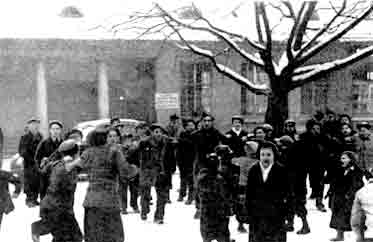
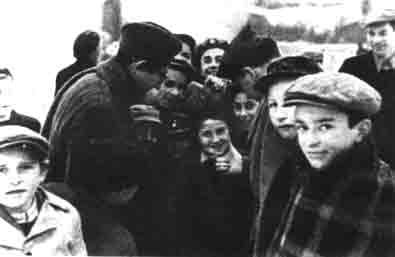
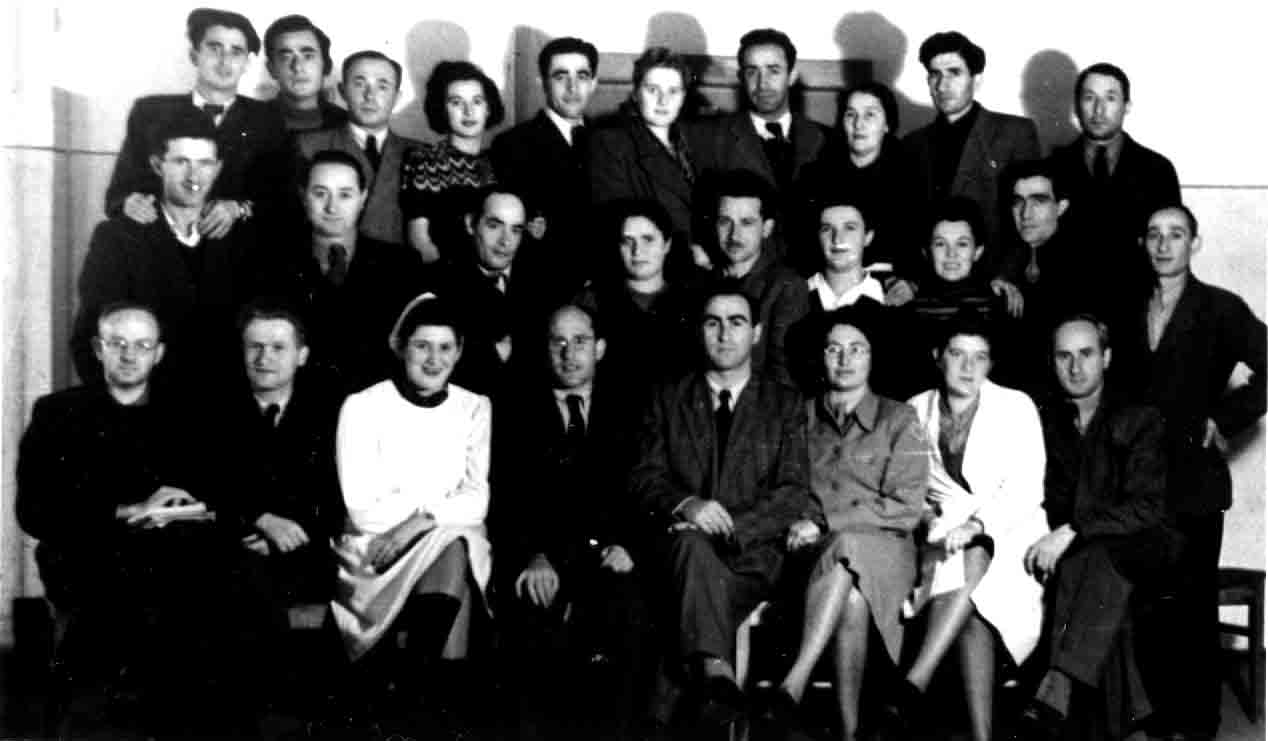
School Teachers
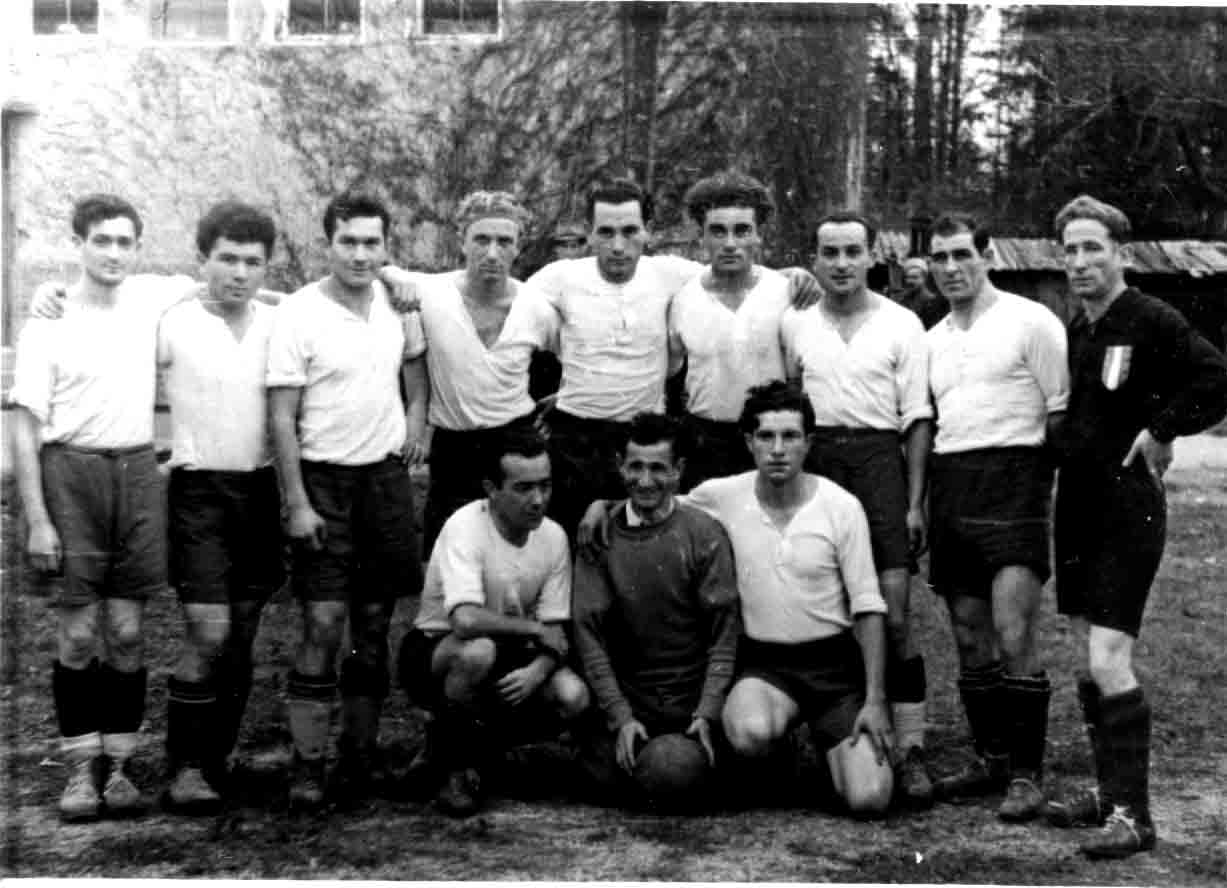
Olympic games for the DPs in 1948.
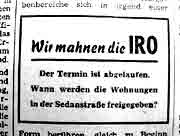
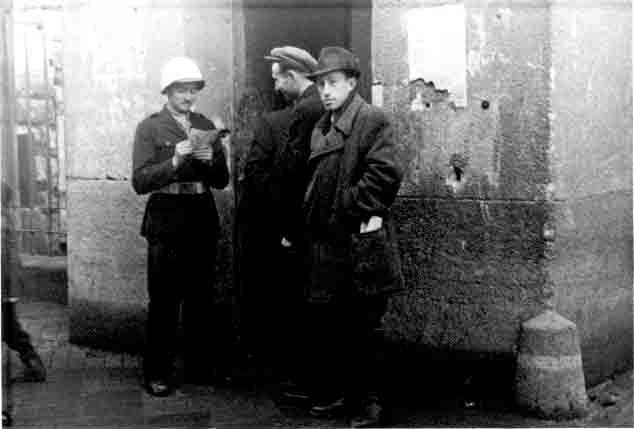
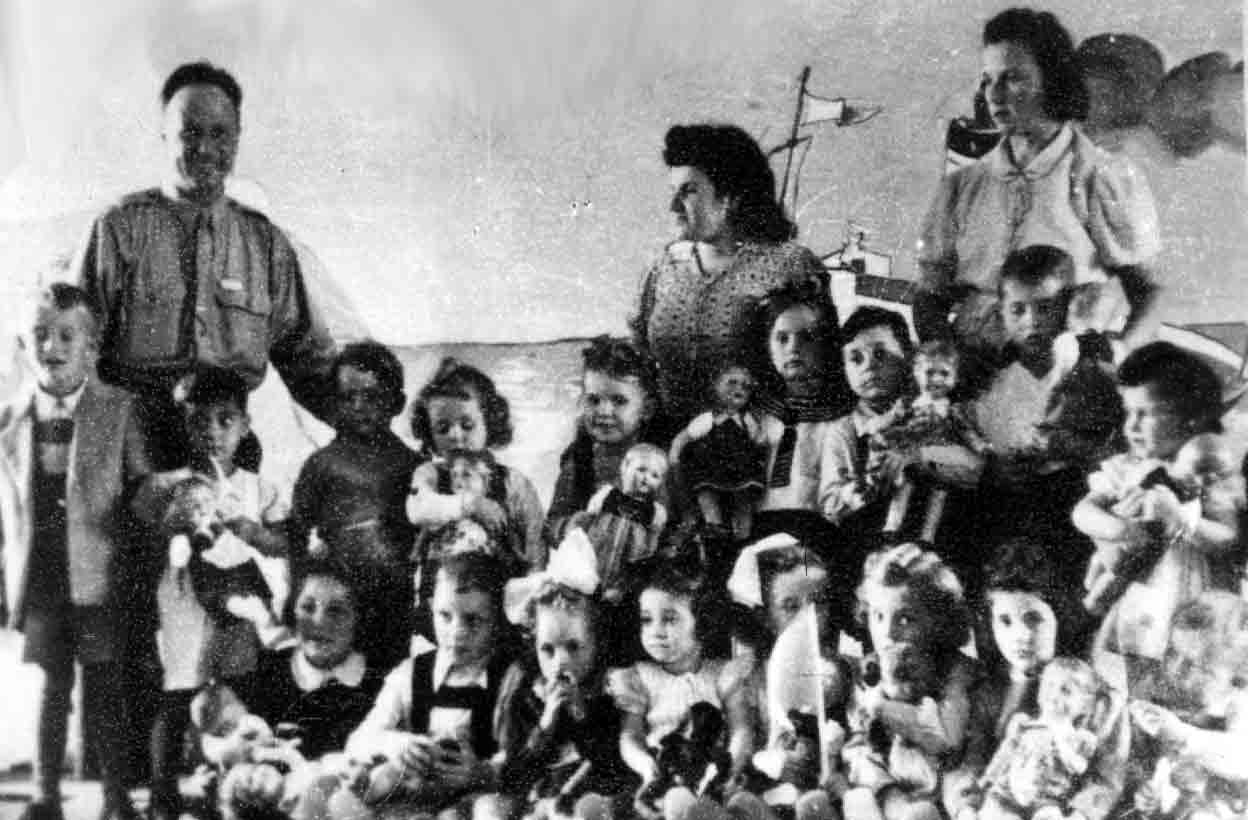
Kindergarten
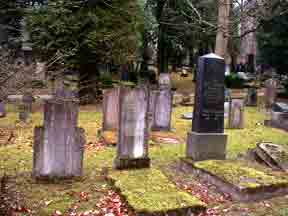
Graveyards
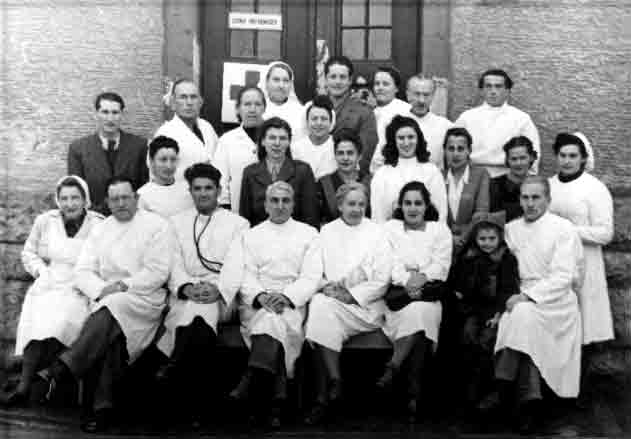
Medical care
Schools: In Dornstadt was a camp for children (now documented in Lochamei ha Gettaot, Israel), and in Neu-Ulm were several institutions and the Ludendorff- Kaserne.
Documented is also the high mortality of the children (50% of the deceased DPs were children in one year.
School teachers and kindergarten
The teachers came from different sides. Some of them were DPs themselves, other came to Europe to serve there as teachers. Those teachers were called by the government or NGO's. The range of schools in Ulm was wide, from religious schools and kindergartens for the children, up to job-training schools and high schools. Those schools were (as it seems at the present) mostly in the hands of the ethnic groups of the DPs. They are not documented in the Ulmian school history.
Activities: The Jewish DPs and their institutions are also well documented in photographs. They show the kindergarten, schools, job-trainings, Rabbis and Jeshivot and even a sportsclub (Ha Koach). There were Olympicgames for the DPs in 1948. (This information is out of a source of the HURI.)
The pictures were taken in 1947, when the situation for the DPs was much better than in 1945-46. The Harrison Report, written shortly after the liberation, is a document of all the hardships and the strange situation, the DPs had to face. American welfare organizations did a lot to improve the situation for the DPs. For the Jewish DPs, help came also from their own charity structures. But this took time.
Repatriation:
One of the reasons that led to the foundation of the UNRRA in 1943 and its successor IRO (from '47 to '51) was to reintegrate the DP's to their former countries. But obviously this was impossible (and rooted in a naive point of view of the UNRAA in the beginning). A lot of the DPs were not able to return to their pre-war homes or countries, and others were not willing, due to the situation in the East, which caused new and constant streams of refugees, and the camps in Ulm and nearby remained overcrowded. This problem was nearly unsolvable. Two camps in Dornstadt (for elder Ukrainians) and at the Eselsberg remained for the 'hardcore DPs' (an official IRO-term! for those unable to be repatriated to their countries). It is of interest, that the people in Ulm organized advertisements against the IRO and its activites, because of the lack of rooms for the German people
Admonition / warning:
The people were upset that the DPs lived in proper houses, and a good part of the
Germans had to live under very bad conditions; some in the former fortress of Ulm.
This article show how the press in Ulm regarded the "liberation" of the Sedan Strasse the day when the 'dirty' DPs left their quarters. This document of the early 50's shows a very strange mentality to us, who know, how much disorder, chaos, pain, suffering and murder came over the world with the German "Ordentlichkeit und Pflichtgefühl"(sense of order and duty ). Five years after the war, the newspapers in Ulm could blame the DPs for their disorder, and showed a picture of the clean and neat street, after the refugees disapeared.
Shopping: The camps were also a centre of the black market. The black market in the post-war cities was a very polyvalent subject. It was a source of rare and important goods and likewise it was a pool of illegal and criminal activities. It was also a source of prejudices. The newspapers in Ulm mention very often the role of the foreigners and their criminality, despite the role of the German participants in that 'trade'. The black market is well documented in the court-records of those days, and there we can find figures, that give a realistic sight.
But if you ask people in Ulm on their memories of the DP time, the black market is one of the major topics. The DP period ended between 1950 and 1952. A lot of the Jewish DPs went to the newly formed country, Israel, and had to face new hardships under war conditions.
Graveyards in Ulm, Neu-Ulm and Dornstadt are the last visible public witness of this period. Friedhof Ulm cemetary on the right shows the Jewish section of the regular cemetry in Ulm. All deceased Jewish DPs were burried there, but not everyone got a gravestone. The very high mortality of newborn children and babies also caused a very close situation in this burial area, which was not widened, although there was space in the close neighborhood, and was overfilled just at the beginning of the DP period.
The place was also used in the time of the shoa for the inhabitants of the so called jüdisches Altersheim in Herrlingen. The elder Jewish people, not able to go on a "transport" were brought to this Altersheim (Home for elder people), where they died. They got very poor gravestones: One burned brick with the dates, and later even not that. Beyond this few squaremeters are burried so many people, that you dare to distrust the given official burial list, but it is made up with "German exactness". This field is one of the darkest places in the area of Ulm, but when you stand there today, it looks peaceful and like a regular section of the graveyard.
Medical care: The picture shows the medical staff of the Sedan-Kaserne. Each barrack had its own staff, and there was a cooperation with the local health structures. The DPs had to go to an examination at the local "Gesundheitsamt" to get the documents for a desired visa. This turned out to become a point of pain for a lot of the DPs. Some, who found relatives somewhere, now found out, that the destruction of their health made it impossible to go to this family members who were abroad. Other times this exam blocked the way for newfound partners to leave Germany together. A surviving member of staff of the Gesundheitsamt told me, that there where a lot of tragedies related with the examinations.
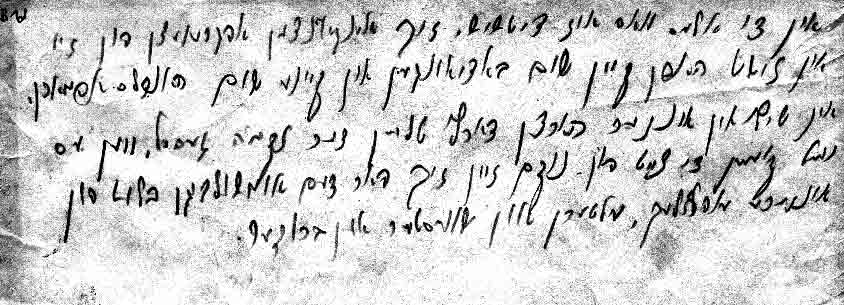
Letter of a survivor of a concentration camp. He writes about his bitterness looking on all the bloodshed. The letter was part of the material found in Ulm.
Further:Ulm was the home of the Scholl Family; Hans and Sophie Scholl were members of the Weisse Rose Group. Here was also the home of Feldmarschall Rommel, who lived in Blaustein / Herrlingen in an arisised house, the former famous 'Jüdisches Landschulheim Herrlingen'.
Institutions working on subjects of the time of the tyranny:
The DZOK (www.dzokulm.telebus.de / dzok@gmx.de is the Dokumentationszentrum Oberer Kuhberg, related to the memorial site of the former KZ Oberer Kuhberg.
Dokumentationszentrum Oberer Kuhberg e.V. Kz-Gedenkstätte
Postfach 2066
89010 Ulm
Tel.: 0731 21312
The KZ, Zwangsarbeiter (Documentation), Ulm and the 3rd Reich. NB There you can also ask in Polish
The Denkstätte Weisse Rose' is related to the Volkshochschule Ulm.
Ulmer Volkshochschule,
Kornhausplatz 5, 89073 Ulm
Tel +49 731 1530 24
Fax +49 731 1530 55
The Deutsch / Israelische Gesellschaft AG Ulm / Neu Ulm Vorsitzender Wolfgang Mäller
Zeppelinstr. 4
89075 Ulm.
City archive - Stadtarchiv http://www.stadtarchiv.ulm.de/
89070 Ulm
Weinhof 12
Tel: 07 31 - 1 61 42 00
Fax: 07 31 - 1 61 16 33
United Nations Relief and Rehabilitation Administration Archives Record Group: PAG 4 Box 3: District 1: Assembly Centers and Area Teams, Heidenheim, Ulm, Stuttgart. See Address page of www.dpcamps.org for UNRRA archives address in NY
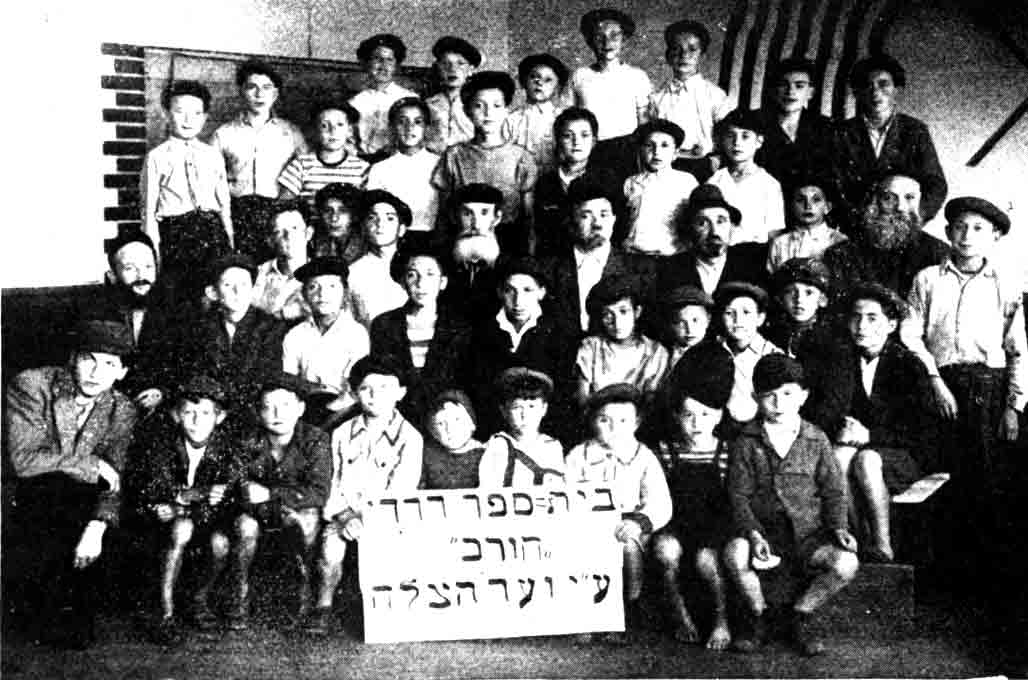
My gate into the DP subject was the discovery of a bundle of (mostly) Yiddish material, which I was asked to catalogize and transcribe it (I speak, read and write Yiddish) and so my first access was the Jewish side. At present I have no other pictures, but from Jewish material. The only source of pictures of Ukrainians I found is a book in the collection of the HURI.
In Ulm there was no interest in the DP subject; only one book was published on the topic, and a lot of work lies ahead. I hope, that the reactions to this page will give us further information. Researched and written by C. Maihoefer, / Germany, 2003
University of Sheffield Library: Special collections and archives: Holocaust Collection
A developing collection of books on the history of the Holocaust.
http://www.shef.ac.uk